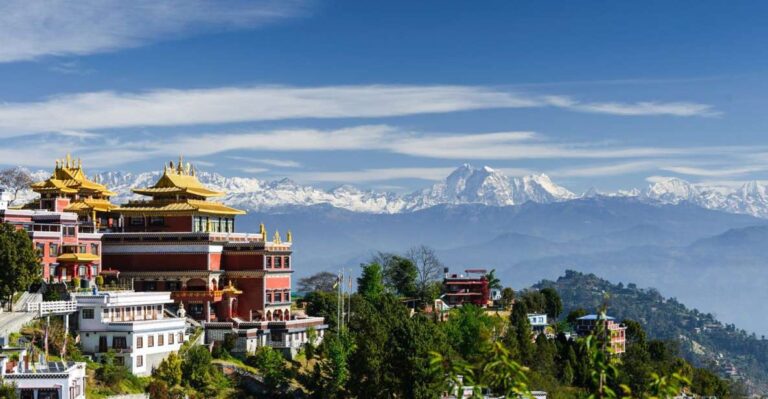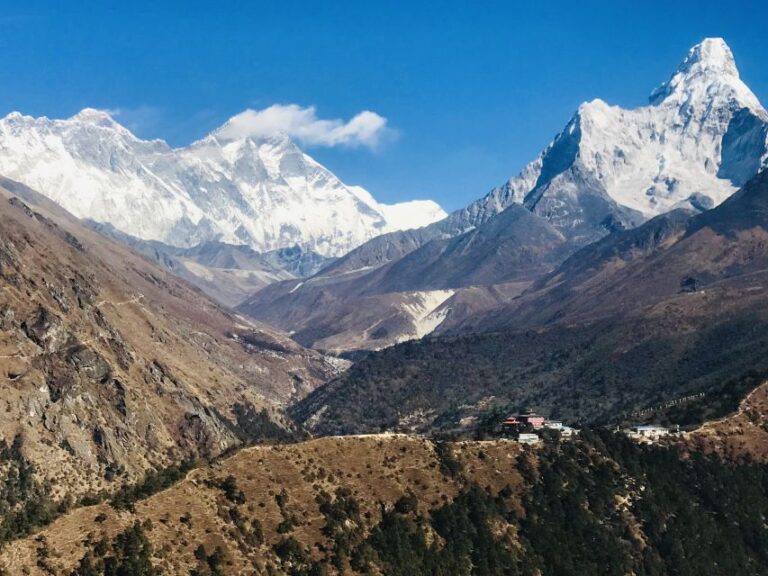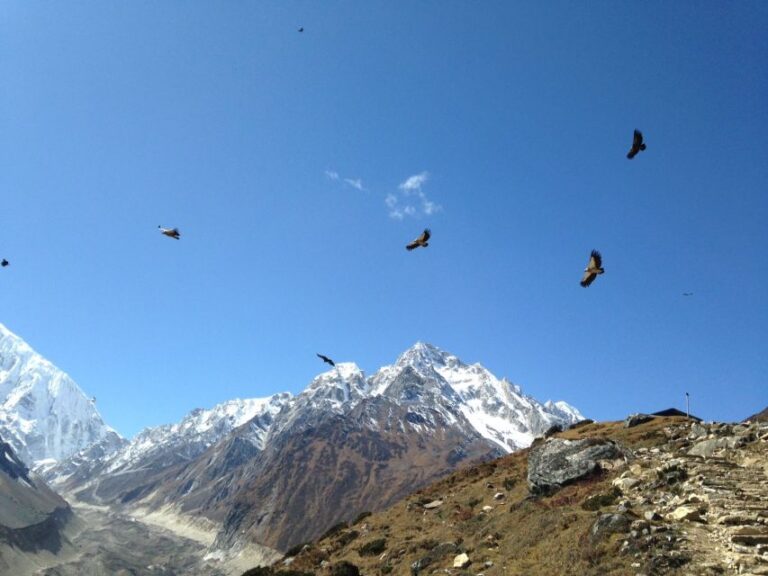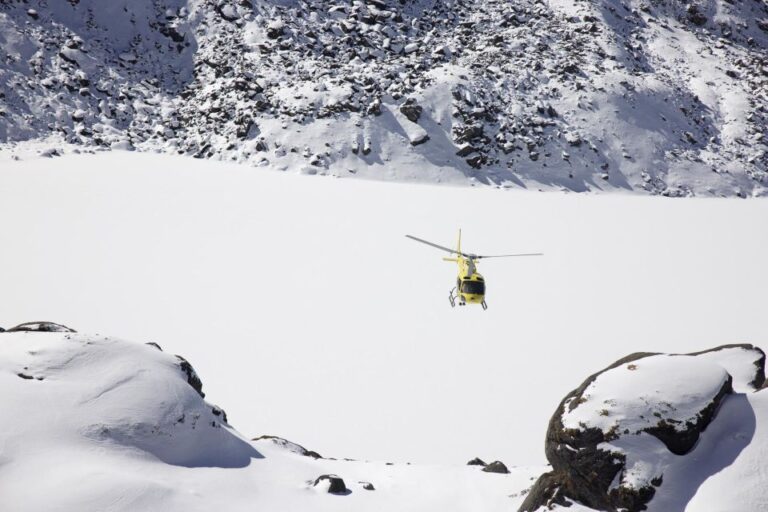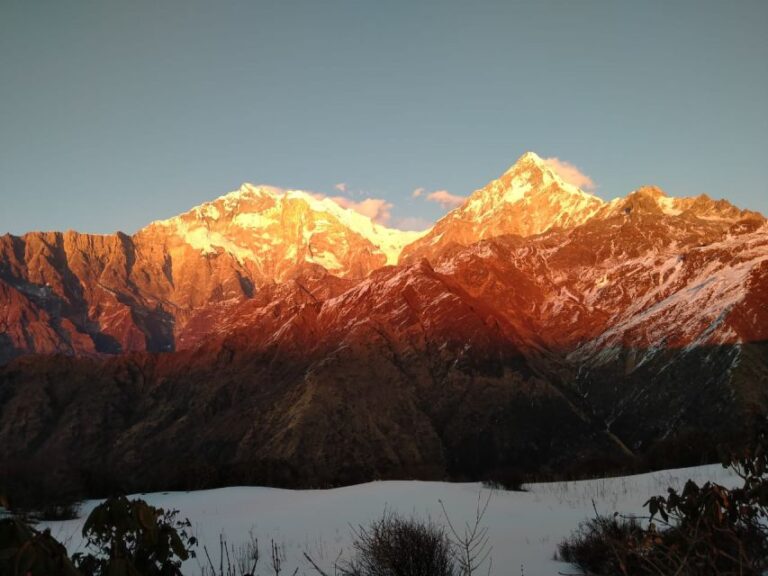Everest Three High Passes Trek: 17-Day Guided 3 Passes Trek
Curious about pushing your trekking boundaries in the Himalayas? Imagine navigating through three high passes in the Everest region, each offering a unique challenge and a rewarding view. With 17 days of exploration ahead, this guided adventure beckons to those with a thirst for the extraordinary.
But what exactly awaits trekkers beyond these passes? The answer lies in the unparalleled landscapes, the cultural encounters, and the personal triumphs that make this journey a pinnacle of mountain expeditions.
Good To Know
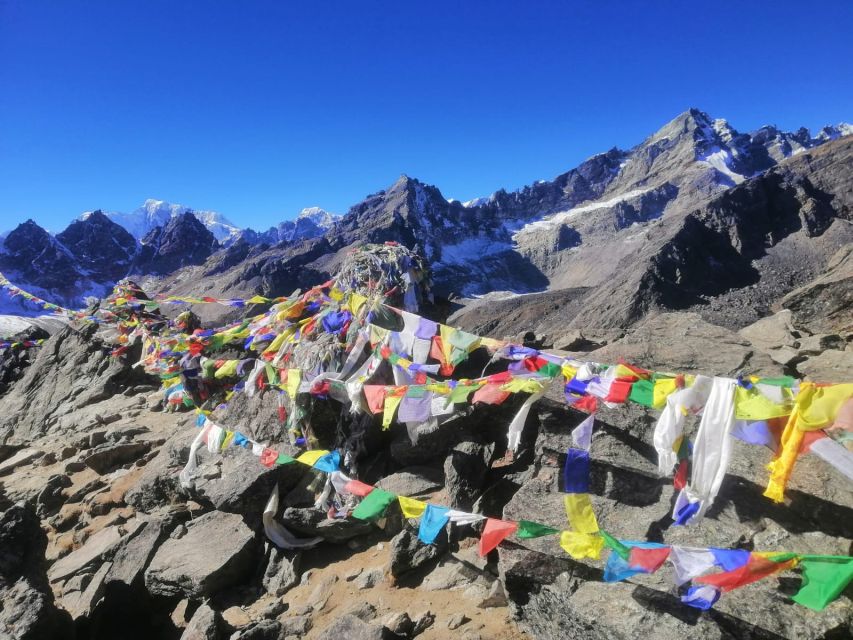
- Navigate Renjo La Pass and other high passes for a challenging trekking experience
- Prioritize acclimatization with rest days to prevent altitude sickness
- Immerse in Sherpa culture and savor local cuisine along the journey
- Stay safe with expert guides, emergency procedures, and proper gear for a successful adventure
Trek Itinerary Highlights
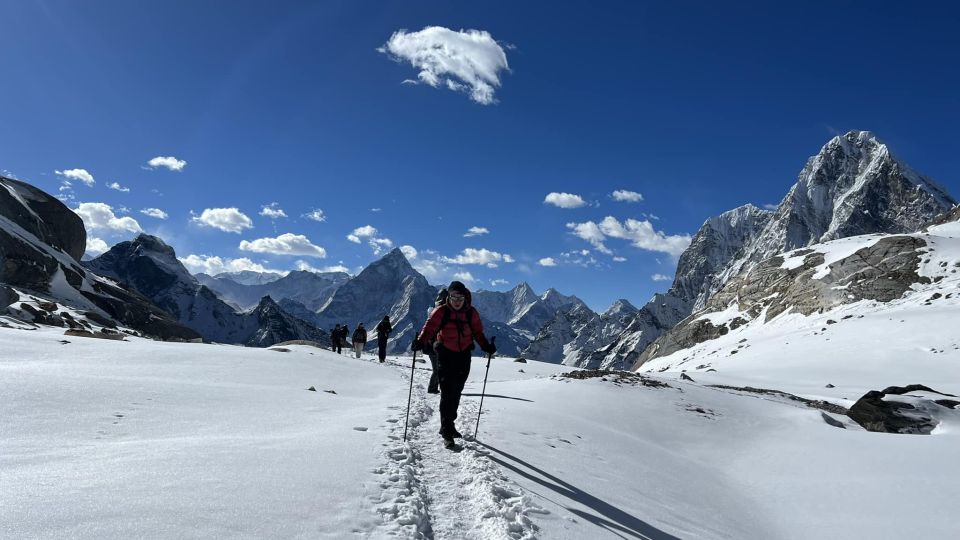
Set out on a thrilling 17-day adventure through the majestic Himalayas with the Everest Three High Passes Trek, featuring the breathtaking Renjo La Pass among its highlights.
The trek offers stunning scenic viewpoints where trekkers can witness the grandeur of the Himalayan landscapes. To aid in acclimatization, the itinerary includes strategic rest days to help adjust to the high altitudes.
Along the journey, you will have unique cultural encounters with local Sherpa communities, providing insights into their traditions and way of life.
Plus, the trek offers a chance to savor delicious local cuisine, adding a flavorful touch to the overall experience.
This combination of natural beauty, culture, and culinary delights makes the Everest Three High Passes Trek a truly unforgettable expedition.
Gear and Equipment Checklist
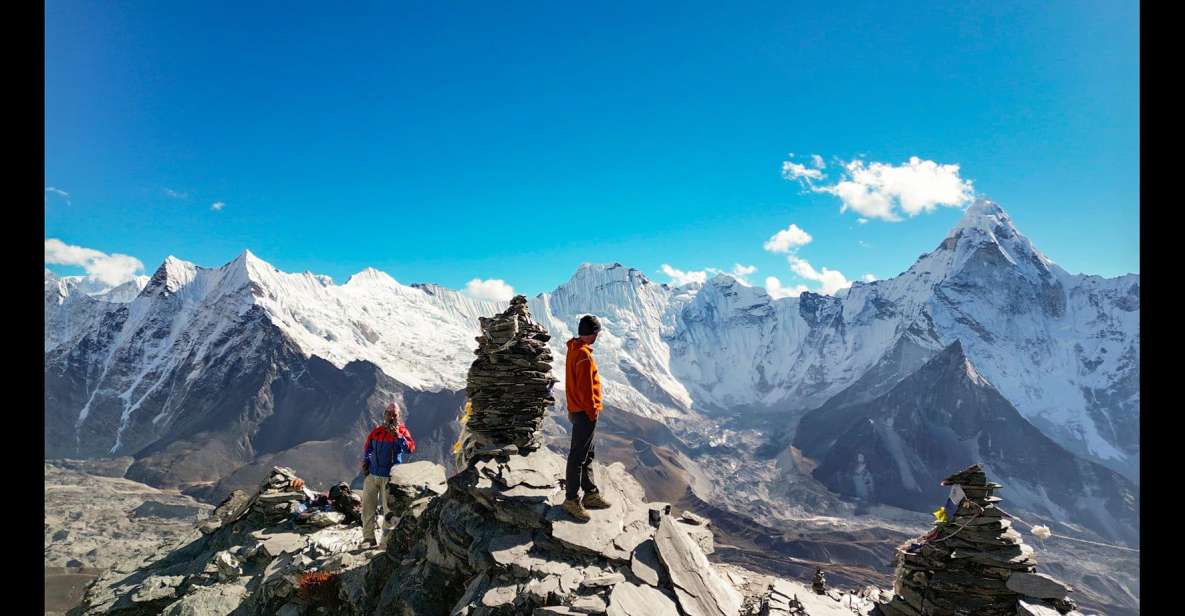
Before setting off on the Everest Three High Passes Trek, trekkers must ensure they have all the necessary gear and equipment on their checklist to ensure a safe and enjoyable journey through the Himalayas. Proper packing essentials and fitness preparation are crucial for this challenging adventure.
Here are five key items to include in your gear and equipment checklist:
- Quality trekking boots with ankle support
- Insulated sleeping bag rated for sub-zero temperatures
- Lightweight yet warm layers of clothing
- UV protection sunglasses and sunscreen
- Water purification tablets or a portable water filter
These items will help trekkers stay comfortable, safe, and well-equipped throughout the Everest Three High Passes Trek.
Altitude Sickness Prevention Tips
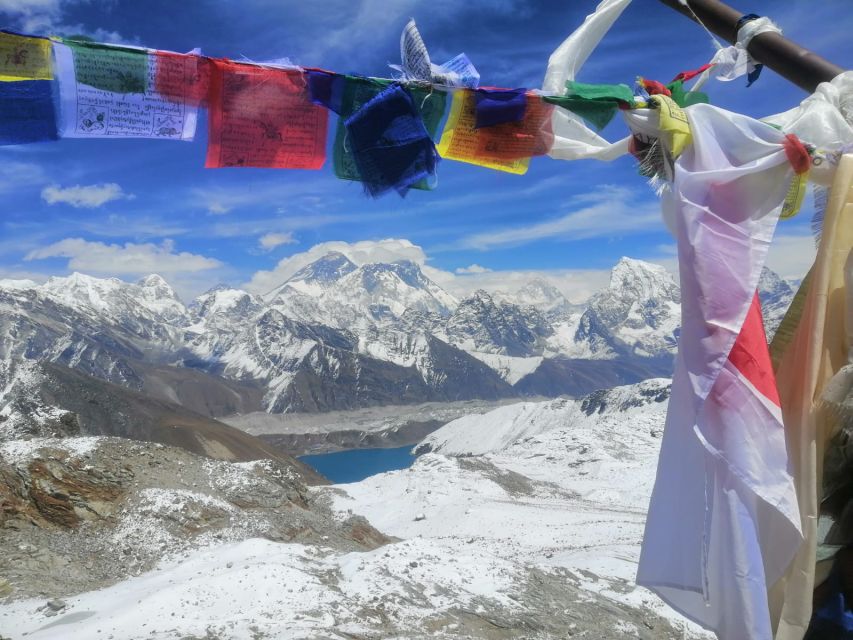
As trekkers ascend through the challenging terrain of the Everest Three High Passes Trek, understanding how to prevent altitude sickness becomes paramount for a safe and enjoyable journey. Acclimatization plays a crucial role in altitude sickness prevention. It’s recommended to ascend gradually, allowing your body time to adjust to the decreasing oxygen levels.
Climbers should plan rest days into their itinerary to aid acclimatization. Plus, staying properly hydrated and eating a balanced diet rich in carbohydrates can help combat altitude sickness. For those at higher risk or experiencing symptoms, altitude sickness medication like Diamox can be considered. However, it’s essential to consult with a medical professional before starting any medication regimen to ensure it’s suitable for individual needs.
Accommodation and Meals Details
Upon arrival at the designated accommodations, trekkers will be welcomed with hearty meals prepared to fuel their bodies for the upcoming challenges of the Everest Three High Passes Trek.
-
Accommodation options:
-
Lodges along the trail offering basic amenities
-
Teahouses providing a cozy place to rest
-
Camping under the stars for a more adventurous experience
-
Meal varieties:
-
Traditional Nepalese dishes like Dal Bhat
-
Continental cuisine for a taste of home
-
Vegetarian and vegan options available
-
Freshly cooked meals to replenish energy levels
-
Snacks and hot beverages to enjoy during breaks
Safety Precautions and Emergency Procedures
Arriving at the accommodation sites, trekkers will find safety measures in place, ensuring a secure environment throughout the Everest Three High Passes Trek. Safety measures include regular safety briefings by experienced guides, who are trained in first aid and equipped to handle emergencies.
Emergency response plans are in effect, with communication devices carried by guides for immediate assistance if needed. Trekkers are advised to follow the guide’s instructions, stay hydrated, and maintain a steady pace to prevent altitude sickness.
In case of emergencies, evacuation procedures are in place, utilizing local resources and helicopter services for swift rescue operations. Prioritizing safety, trekkers can embark on this challenging adventure with confidence, knowing that precautionary measures and emergency protocols are carefully implemented.
Frequently Asked Questions
What Is the Maximum Group Size for the Everest Three High Passes Trek?
The maximum group size for the trek depends on the difficulty level. It is essential to consider the challenge of navigating high passes while ensuring the group size allows for personalized attention and safety throughout the adventure.
Are There Any Cultural Experiences Included in the Trek Itinerary?
Local customs and traditional dances enrich the Everest Three High Passes Trek. Participants immerse in Sherpa culture, witness prayer ceremonies, and enjoy cultural performances. These experiences offer a deep connection to the region’s heritage, making the journey truly unforgettable.
Is There Wi-Fi or Phone Signal Available Along the Trekking Route?
Wi-Fi availability along the trekking route can be sporadic, with some lodges offering limited connectivity. Phone signal coverage varies, especially in remote areas. It’s advisable to inform loved ones beforehand about potential communication challenges during the trek.
Are There Any Age Restrictions for Participating in the Trek?
Age restrictions are not specified; however, participants need to be well-fit for the trek due to its challenging nature. Health requirements suggest considering high altitude diamox and avoiding drones. Spring and autumn are ideal seasons for the trek.
Are There Opportunities for Wildlife Spotting During the Trek?
Wildlife encounters during the trek offer breathtaking moments for nature photography enthusiasts. Participants may spot Himalayan wildlife like snow leopards and musk deer. The diverse flora and fauna along the trail create a mesmerizing backdrop for memorable nature captures.
Not for you? Here's more of our most recent tour reviews happening neaby
- Everest: 12-Day Trek From Lukla to Kala Patthar
- Kathmandu: 11-Day Everest Base Camp Trek
- From Kathmandu :21 Days Everest (Base Camp)Three Passes Trek
- From KTM: 7 Day Everest Base Camp Trek With Helicopter Tour
- Everest Base Camp Trek – 12 Days
- 15 Days Luxury Everest Base Camp Trek
- Island Peak Climbing: – 17-Day EBC Via Island Peak Climbing
The Sum Up
To sum it up, the Everest Three High Passes Trek offers a thrilling adventure through the stunning Himalayas, with challenging terrain and breathtaking views.
With careful planning, proper gear, and precautions against altitude sickness, participants can embark on a life-changing journey full of unforgettable moments.
Don’t miss out on this opportunity to explore the beauty of Nepal’s Sagarmatha Zone and create memories that will last a lifetime.
Reserve your spot now for an experience like no other!
